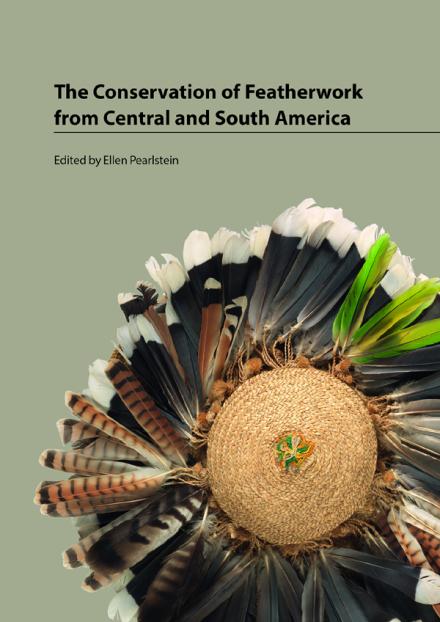Book Review: The Conservation of Featherwork from Central and South America
Submitted by sharragrow on Mon, 23/07/2018 - 16:31

"The Conservation of Featherwork from Central and South America"
Edited by Ellen Pearlstein
London, Archetype Publications Ltd. 2017
106 pages, 205 color illustrations
ISBN: 978-1-909492-39-4
Review by Melanie Korn
Ellen Pearlstein has produced a handbook on the conservation of feathers that clearly illustrates the current state of research on the subject with numerous practical examples. Pearlstein also discusses deficits in current conservation methodology, especially regarding documentation, and she offers suggestions for improvement. This comprehensive publication will be indispensable for conservators, museologists, ethnologists, archaeologists, and historians working with ethnologic or archaeological featherwork.
The introduction discusses the investigation, documentation, preventive conservation, and practical treatment of feathers (including cleaning, reshaping and realigning, mending, and loss compensation). In so doing, the author takes into account current discussions between conservators and curators on the display and conservation of feathers. The subject of repatriation and legal aspects influencing conservation, arising from the CITES endangered species protection agreement, are presented.
The publication offers numerous helpful tips for the investigation, documentation and conservation of feathers. The author shows, for example, that investigations using ultraviolet light (365 nm) can be of great assistance in identifying feathers, as only a few of the biopigments that are the cause of coloration fluoresce.
Pearlstein presents a template that, for the first time, allows an exact, unified description and documentation of feathers. Characteristic features, traditional working and modification techniques, and states of preservation can be systematically recorded. This detailed technical information provides insight into the cultural significance of featherwork. Thanks to these procedures, it will be possible to standardize future documentation. As a result, significant similarities and differences in materials and working techniques will be easier to recognize and compare.
The second part of the publication presents six case studies on the investigation and conservation of feather objects. These case studies were done by students from the UCLA/Getty Master’s Program in the Conservation of Archaeological and Ethnographic Materials, who documented and treated artifacts from the Fowler Museum collection using the new guidelines.
Pearlstein's publication is an essential reference for anyone working with feather objects from ethnographic or archaeological collections. Her volume will undoubtedly have a lasting interdisciplinary influence on the handling, exhibition, and conservation of feather objects. This work deserves broad readership, as the complex nature of featherwork is often underestimated. I am hopeful that this precise, standardized documentation of feather objects will improve future attitudes toward their importance, so that feathers can be better conserved.